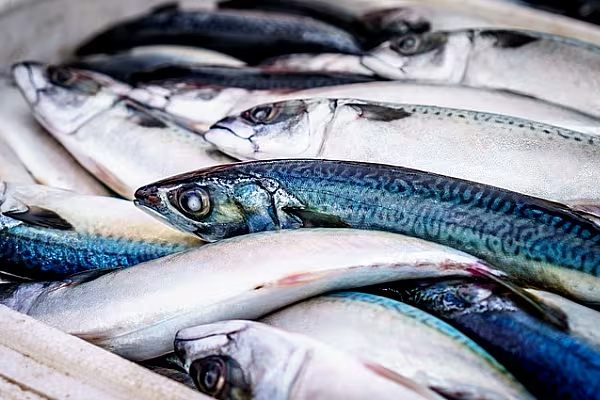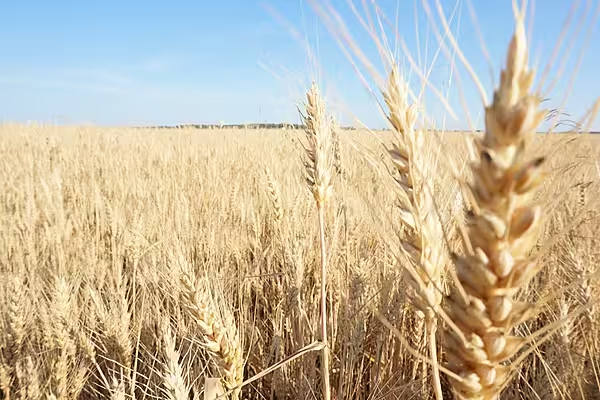Chinese consumers are having a hard time stomaching a nearly 50% jump in fish prices from a year ago, which mark the latest shake-up to the country's vast food sector following a deadly hog disease outbreak that saw pork prices triple in 2019.
Fish had previously been among the cheapest sources of protein in China, but is now more expensive than chicken and recently also higher than staple pork.
Average wholesale prices of four freshwater fish monitored by the country's agriculture ministry jumped almost 40% from the previous year, according to latest official data, and some popular fish such as grass carp are up by more.
Grass carp were at 21.06 yuan ($3.27) per kilogram by end of August, up about 60% from a year ago, and pork dropped to 20.8 yuan, according to the data.
While pork prices have plunged 60% this year on higher output and more African swine fever outbreaks that sent waves of pigs to slaughter, the steep rally in the fish market has helped lift China's consumer prices for six straight months.
Supply Issues
A combination of supply issues tied to toughening environmental standards and reduced rain in some areas impacted China's fish farm output this year, while fish demand has climbed since the African swine fever outbreak pushed up pork prices and spurred consumers to diversify their protein intake.
"On the supply side, there's a combination of more ecological regulations which limit the areas that can be used to raise fish and feed costs have also been high, and some of those increased costs are passed along to consumers," said Darin Friedrichs, senior analyst at StoneX.
"While pork prices have fallen recently, it was expensive for two years and consumers diversified their diets which included eating more fish," Friedrichs said.
COVID-19's impact on global supply chains also bolstered domestic fish prices, after China suspended seafood imports from various origins after detecting the novel coronavirus on some shipments, curbing supplies.
Costly Production
A widespread environmental clean-up drive has led China to restrict fish farming along major waterways in recent years, leading to a drop in the number of fish farms.
"Fishing is banned in many river ways and in net cages as the state stepped up environmental protection measures," said a fish feed producer based in eastern China, who declined to be identified as he was not authorised to talk to media.
Rising aquaculture feed costs have been another factor lifting fish prices. Key fish feed ingredients including rapeseed, soybean and cottonseed meal have all gone up, said the producer, who has raised his fish feed product prices three times since May, and by up to 20%. "Silver carps, for example, used to be cheaper than tofu, but now are double the price of tofu," he said.
Disease Impact
The aftermath of African swine fever has had ripple effects across China's entire protein sector.
Record high pork prices in 2019 and 2020 encouraged farmers to boost hog output aggressively, but the resulting swell in supplies this year - accentuated by record meat imports and further disease outbreaks - fuelled a collapse in hog and pork prices that has left the industry reeling.
"The swine fever outbreak, which led to pork shortages and sky-high prices, further tilted the scales in favour of fish consumption," said Barsali Bhattacharyya with the Economist Intelligence Unit (The EIU).
Heightened worries over food safety has also altered consumer behaviour.
"In the aftermath of the COVID pandemic, increased fear of zoonotic diseases will see Chinese consumers continue to prefer fish,” Bhattacharyya said.
China's consumption of pork, the most widely eaten meat in the country, fell 25% in 2020 from 2018, and remains well below the 2014 peak, according to data from the United States Department of Agriculture.
Outlook
The outlook for fish consumption is strong, however, with China expected to account for 40% of the global rise in food demand for fish growth to 180 million tonnes by 2029, according to the Food & Agriculture Organisation (FAO).
That said, with certain wholesale fish prices now even with pork, some switching from fish to pork may now may prop up the pork market and cool fish's momentum.
"As pork prices come back to normal levels, consumption of alternatives will relatively shrink, including demand for fish," said a China-based analyst who declined to be named due to sensitivity of the matter.
News by Reuters, edited by ESM. For more Supply Chain news, click here. Click subscribe to sign up to ESM: European Supermarket Magazine.














